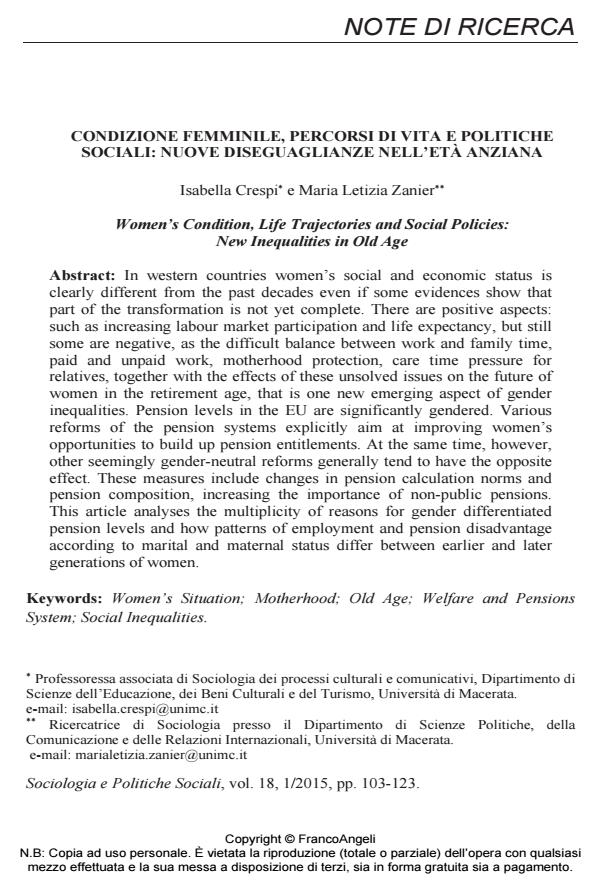Women’s Condition, Life Trajectories and Social Policies: New Inequalities in Old Age
Journal title SOCIOLOGIA E POLITICHE SOCIALI
Author/s Isabella Crespi, Maria Letizia Zainer
Publishing Year 2015 Issue 2015/1
Language Italian Pages 21 P. 103-123 File size 108 KB
DOI 10.3280/SP2015-001006
DOI is like a bar code for intellectual property: to have more infomation
click here
Below, you can see the article first page
If you want to buy this article in PDF format, you can do it, following the instructions to buy download credits

FrancoAngeli is member of Publishers International Linking Association, Inc (PILA), a not-for-profit association which run the CrossRef service enabling links to and from online scholarly content.
In western countries women’s social and economic status is clearly different from the past decades even if some evidences show that part of the transformation is not yet complete. There are positive aspects: such as increasing labour market participation and life expectancy, but still some are negative, as the difficult balance between work and family time, paid and unpaid work, motherhood protection, care time pressure for relatives, together with the effects of these unsolved issues on the future of women in the retirement age, that is one new emerging aspect of gender inequalities. Pension levels in the EU are significantly gendered. Various reforms of the pension systems explicitly aim at improving women’s opportunities to build up pension entitlements. At the same time, however, other seemingly gender-neutral reforms generally tend to have the opposite effect. These measures include changes in pension calculation norms and pension composition, increasing the importance of non-public pensions. This article analyses the multiplicity of reasons for gender differentiated pension levels and how patterns of employment and pension disadvantage according to marital and maternal status differ between earlier and later generations of women.
Keywords: Women’s Situation; Motherhood; Old Age; Welfare and Pensions System; Social Inequalities.
- Facing the Gender Gap in Aging: Italian Women’s Pension in the European Context Maria Zanier, Isabella Crespi, in Social Sciences /2015 pp.1185
DOI: 10.3390/socsci4041185
Isabella Crespi, Maria Letizia Zainer, Condizione femminile, percorsi di vita e politiche sociali: nuove diseguaglianze nell’età anziana in "SOCIOLOGIA E POLITICHE SOCIALI" 1/2015, pp 103-123, DOI: 10.3280/SP2015-001006